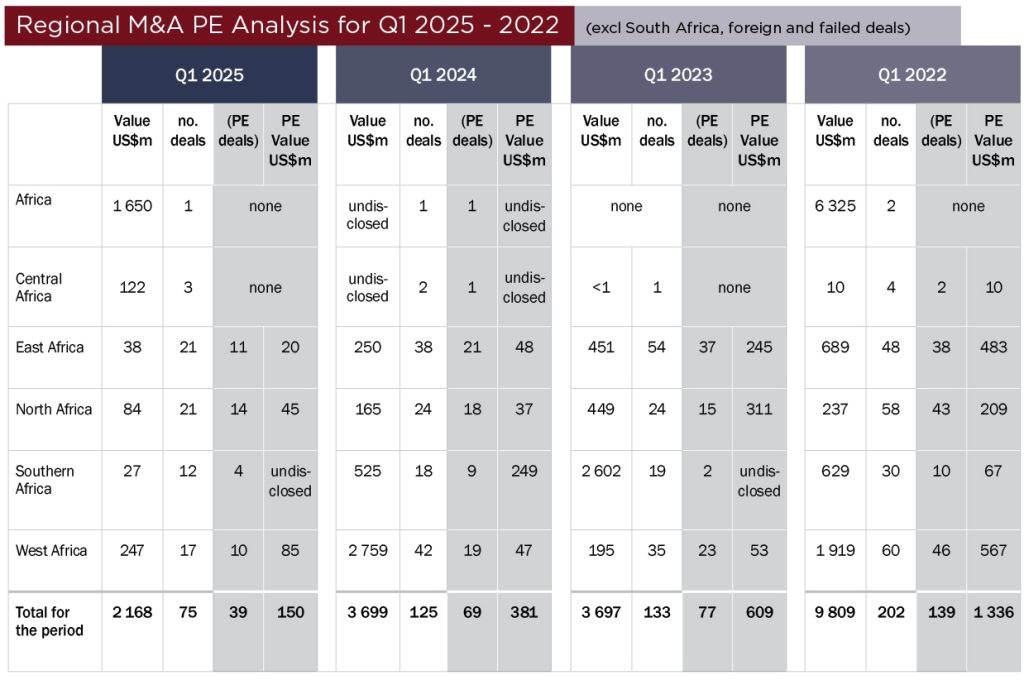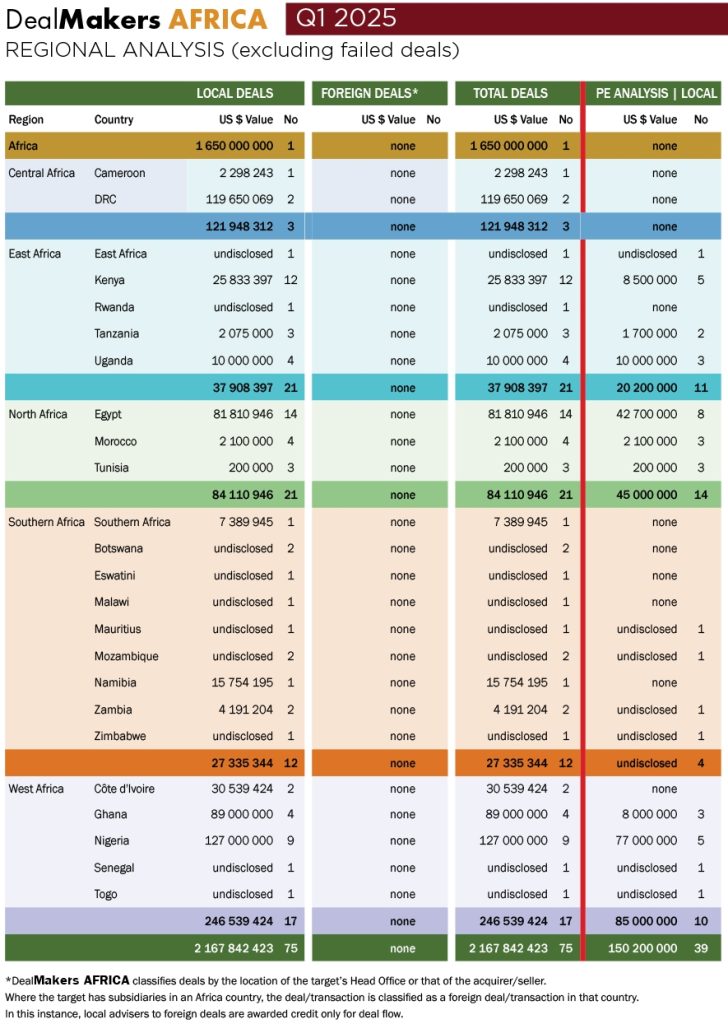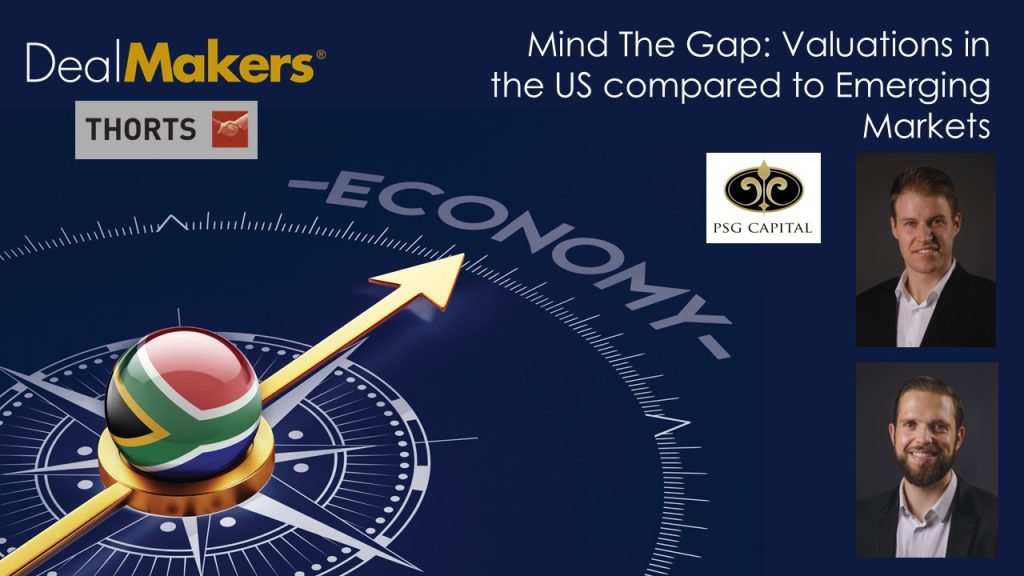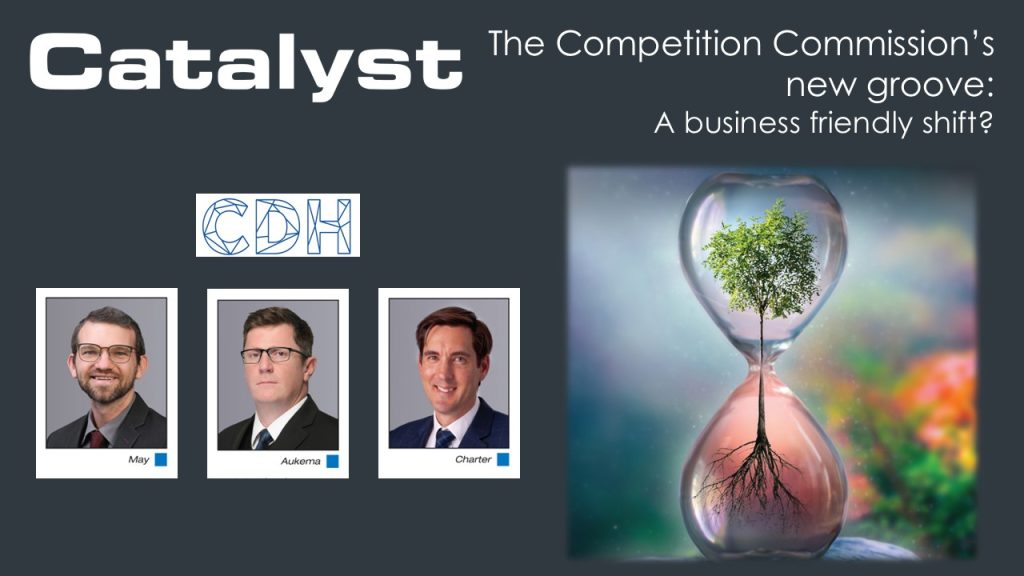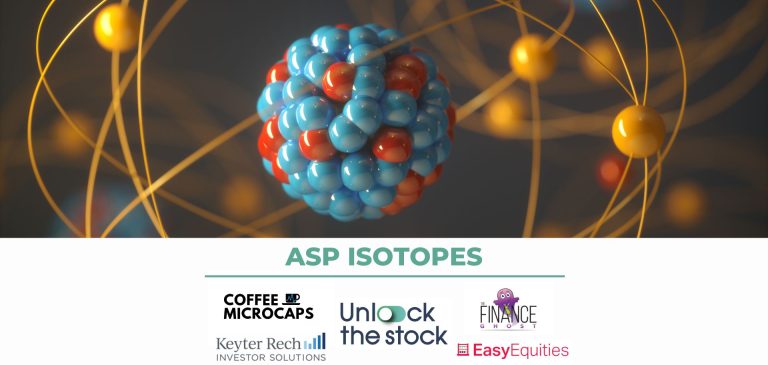Afrimat – brave dealmaking drives short-term pain (JSE: AFT)
Despite the jump in revenue, it was actually a very tough year
In the year ended February 2025, Afrimat’s revenue was up 36.7%. That sounds incredible, except the increase was because of the inclusion of the Lafarge business in the numbers. There’s a big difference between revenue and profits, with the cement business incurring losses throughout the year.
Why would Afrimat buy a business that negatively impacts results? Simply, they are playing the long game here. If you can buy and successfully improve distressed assets, then you make a killing. And if you don’t get it right, you get killed. Risk / reward, right?
To add to the risk, there were large additional finance costs from the transaction. This is why the debt:equity ratio has jumped from 1.4% to 48.9%. The balance sheet was in a position to take on a large transaction and Afrimat was brave enough to do it, with Lafarge being the largest acquisition in the company’s history.
One of the other risks that became very apparent in the past year is the exposure to ArcelorMittal as a major customer. Revenue from that group was R963.4 million this year, which is surprisingly up from R879.3 million in the prior year despite all the troubles there. For context, Afrimat’s group revenue was R8.3 billion in this period, so ArcelorMittal was around 11.6% of group revenue.
Although group HEPS fell quite spectacularly from 567.3 cents to 72.3 cents in this period, it’s important to look deeper to understand why. Lafarge was a major contributor, but certainly wasn’t the only reason.
For example, the aggregates business within Construction Materials (which includes part of Lafarge) grew operating profit by 40.2% to R383.5 million. The cement business lost R285.4 million, with many operational challenges during the year that hopefully won’t repeat in the coming year.
In the Bulk Commodities segment, which is even more important, operating profit unfortunately fell by 70.1%. Iron ore sales were a severe drag, impacted by commodity price decreases, higher shipping costs and challenges in rail volumes.
Moving on to Industrial Minerals, operating profit was over 4x higher at R58.8 million. Finally, the Future Materials and Metals segment incurred start-up losses of R35 million.
Against this backdrop, it won’t surprise you to learn that the group dividend is a tenth of what it used to be – R24 million instead of R245.9 million. I’m actually slightly surprised that there’s a dividend at all, given the amount of debt!
Afrimat’s share price is down 25% in the past year, with essentially the entire drop happening in 2025. The Lafarge deal was very brave and the deteriorating macroeconomic situation hasn’t helped them. Still, this management team’s reputation is there for a reason, so I wouldn’t bet against them to get this right.
The numbers keep dropping at Barloworld (JSE: BAW)
Surely that offer is looking juicier and juicier for major shareholders?
I’ve said from the start with this Barloworld take-private that I think shareholders are being too greedy here. Much like we saw with Bell Equipment, there’s no guarantee that a follow-on deal comes in at a better price. Particularly when earnings are washing away due to where we are in the cycle, the next offer might be 5 years away (or more).
As things stand at Barloworld, there haven’t been enough acceptances of the offer for it to go ahead. The offerors have the right to walk away if they don’t achieve a 90% acceptance. Although I’m pretty sure they would be happy with far less, they’ve made it clear that the current acceptance level (below 50%) just isn’t going to cut it.
And in the background to all this, Barloworld’s numbers are dropping. A trading statement reveals that for the six months to March 2025, Barloworld’s HEPS will be down by between 18.9% and 22.7%. This puts them on interim HEPS of 411.5 cents to 431.5 cents. At the mid-point and assuming we simply annualise this number, the forward P/E of the office price of R120 per share is around 14.2x. For a cyclical business with problematic exposure to Russia, I would take that price and run for the hills if I was a shareholder here.
Speaking of Russia, this is where Barloworld lays the blame for the latest drop in the numbers. Due to ongoing sanctions, trading activities at Vostochnaya Technica’s have decreased.
Equites Property Fund flags higher growth going forwards (JSE: EQU)
Despite rental growth, UK property valuations are under pressure
Equites has been on an extensive asset recycling programme recently, which is just a fancy way of saying that they’ve been selling off properties. They disposed of R2.4 billion worth of properties in the latest financial year, which is a beefy number in the context of a total portfolio value of R21.1 billion.
They’ve focused on getting out of smaller, specialised or non-ESG compliant assets. This leaves them with a portfolio of larger, more dependable assets. Although they don’t bluntly say it, this also gives them better access to ESG-flavoured funding, which often comes at a discount to non-ESG funding so that banks can tell a great ESG story.
The South African portfolio grew like-for-like rentals by 5.9% and valuations by 6.0%, so that’s a decent outcome. The UK portfolio hasn’t been as kind to them, with just a 1% uplift in GBP terms despite uplifts on rent reviews of between 19% and 69%.
The loan-to-value ratio is 36% (down from 39.6%), so there are no concerns there despite the development programme in the group. This is why there’s a dividend payout ratio of 100% of distributable earnings per share.
Distributable earnings were up 8.9%, but the dividend per share was up just 2.1%. The net asset value per share was down 3.8%. This is the impact of a dividend reinvestment plan. It’s great for the strength of the balance sheet, but it dilutes shareholders over time unless they reinvest their dividends. A dividend reinvestment plan is essentially a miniature rights offer.
Karooooo delivers another strong quarter (JSE: KRO)
I’m loving the consistency of delivery
Karooooo is one of my great frustrations, as I sold part of my stake when they were having a serious wobbly a couple of years ago. It was completely the wrong call. Although I obviously made the decision based on the information I had at the time (including Karooooo’s strange adventure with selling cars in Carzuka), the correct thing to do was to sit on my hands and trust that my large position (in the context of my portfolio) would be fine. Many investors have learnt that lesson and will continue to learn that lesson. Hindsight is perfect!
The other thing that is just about perfect is the way that this group keeps growing. Thank goodness I only sold part of my stake, as I thought there was still a decent chance of them getting the global expansion done. With the latest quarter reflecting growth in Cartrack subscribers of 17% and subscription revenue growth of 16%, they are still doing really well. Importantly, the number of net additions was up 25%, so the rate of growth is increasing.
The even better news is that operating profit margin expanded from 30% to 34%, which means operating profit was up by a delightful 30% year-on-year.
If we lift our heads from the fourth quarter and look at the full-year numbers instead, we find 17% growth in subscribers, 15% growth in subscription revenue and 26% growth in operating profit. The contribution of the logistics deliver-as-a-service segment shouldn’t be underestimated, as it grew 33% for the full year to R420 million. For context, Cartrack’s subscription revenue was just over R4 billion.
Earnings per share increased 25% for the year. Adjusted earnings per share (taking out some once-off and non-operating items) increased 33%.
Looking ahead, they expect some margin pressure in the coming year as they are anticipating another period of investment in sales and marketing. Cartrack’s subscription revenue is expected to grow by between 16% and 21%, but earnings per share is only expected to grow by between 7.3% at the midpoint of guidance (vs. adjusted EPS) or 14% vs. reported EPS.
I’ll hang on for that ride. I’ve learnt my lesson.
Just what the doctor ordered at Netcare (JSE: NTC)
HEPS has shown strong growth
Hospital groups haven’t generally been great places to make money over the years. They tend to earn a return below their cost of capital. Still, the recent trend has been one of improvement, with Netcare adding a trading statement for the six months to March to the mix.
Adjusted HEPS will be up by between 18% and 22%, coming in at 49.0 cents. In case you’re wondering, HEPS without any adjustments is almost identical at 48.9 cents, with a similar growth range.
They attribute the improvement to increased activity and efficiencies in the operations. Full results are due soon (19 May) and will then give all the details.
Earnings have roughly doubled at PPC (JSE: PPC)
A focus on cost control and efficiencies is working
When a company operates in an industry with weak demand, as has been the case in the local cement industry for years now, they have little choice but to focus on efficiencies. PPC has done exactly that and with much success.
For the year ended March 2025, PPC has guided that HEPS will be between 37.30 and 41 cents. This is approximately double the comparable period, when HEPS was 19 cents. The company attributes this success to cost control and savings from operational initiatives. They didn’t just managed to constrain the growth in costs – they actually achieved lower costs than in the comparable period!
Sanlam banks another strong quarter (JSE: SLM)
This financial services group just keeps winning
Sanlam is a great example of local corporate excellence. As financial services firms go, Sanlam seems to be one of the most consistent in terms of delivering appealing financial results.
The latest quarter is no different, with the net result from financial services up by 15% as reported (or 18% in constant currency – they have a large emerging and frontier markets business). Net operating earnings grew 22% as reported (26% in constant currency). Those are excellent numbers that were achieved despite just 4% growth in life insurance new business volumes. Diversification played a major role here, as group new business volumes were up 15%.
It was a busy period for corporate actions as well. They completed the disposal of 60% of the A1 ordinary shares in NMS Insurance Services (the MultiChoice insurance business) to Santam, which means the life and short-term insurance offerings at NMS are each sitting in the logical place within the Sanlam group. Shortly after the end of the quarter, they finished off the SanlamAllianz deal that achieves a split of 51% Sanlam – 49% Allianz in that joint venture. And finally, Sanlam completed its subscription to take its stake in Shriram Wealth in India from 26% to 49.7%. Looking ahead, they also achieved the required approvals to take the effective economic shareholding in Shriram Asset Management Company from 16.3% to 35.5%.
As you can see, Sanlam just doesn’t sit still. This is why they’ve built such a juggernaut of a thing, with a variety of business interests.
Due to the broader uncertainty around global trade and economic conditions at the moment, the group isn’t making any changes to its earnings guidance. They have indicated an intention to keep a larger capital buffer than normal though, which is a sign of conservatism in this environment. It also means that if the economy does fall out of bed, they might have the firepower for opportunistic deals. The serious money gets made by those who are liquid at the bottom of the cycle, not at the top.
Southern Sun is shining brightly (JSE: SSU)
The Western Cape is a particular highlight
Southern Sun is due to release its results for the year ended March 2025 on 21 May. In the meantime, they’ve released a further trading statement that gives a tighter range for earnings.
Unsurprisingly, the Western Cape has been the best region for the group. They do also flag growth in Gauteng, particularly around the Sandton Convention Centre. The conferencing and events industry is key to the Southern Sun strategy and South Africa remains an appealing venue.
This has resulted in adjusted HEPS for the year of 74.4 cents to 76.7 cents, an increase of 32% to 36% vs. the comparable period. This gives some support to the share price move of 66% over the past 12 months, although it also shows that roughly half of the increase is due to improved sentiment rather than banked profits.
Nibbles:
- The previously announced acquisition of Despegar by Prosus (JSE: PRX) / Naspers (JSE: NPN) has now closed. This is part of the “digital lifestyle ecosystem” that the group is talking about building in markets outside of the US. As I’ve written several times recently, it’s a strategy that I like!
- Newpark REIT (JSE: NRL) has disclosed a few related party transactions. They fall below the mandatory reporting threshold, so this is purely a voluntary announcement. They relate to the outsourcing of lease renewals, capital projects, financial management and cash management services. None of the fees seem unreasonable to me. In fact, the REIT is in all likelihood getting a better deal because of the related parties.
- There is just about no liquidity in the stock of Cafca Limited (JSE: CAC), so the results get just a mention down here. The financials are reported in Zimbabwean Gold (not a currency you’ll see every day!) and reflect a drop in HEPS of 73%.
- Deutsche Konsum (JSE: DKR) is another example of a totally illiquid stock on the JSE. The property is trying to get its balance sheet to sustainable levels, so a stable trading performance in the interim period is helpful. The loan-to-value ratio dropped from 57.2% in September 2024 to 52.5% as at the end of March 2025 – but that’s still much too high.






